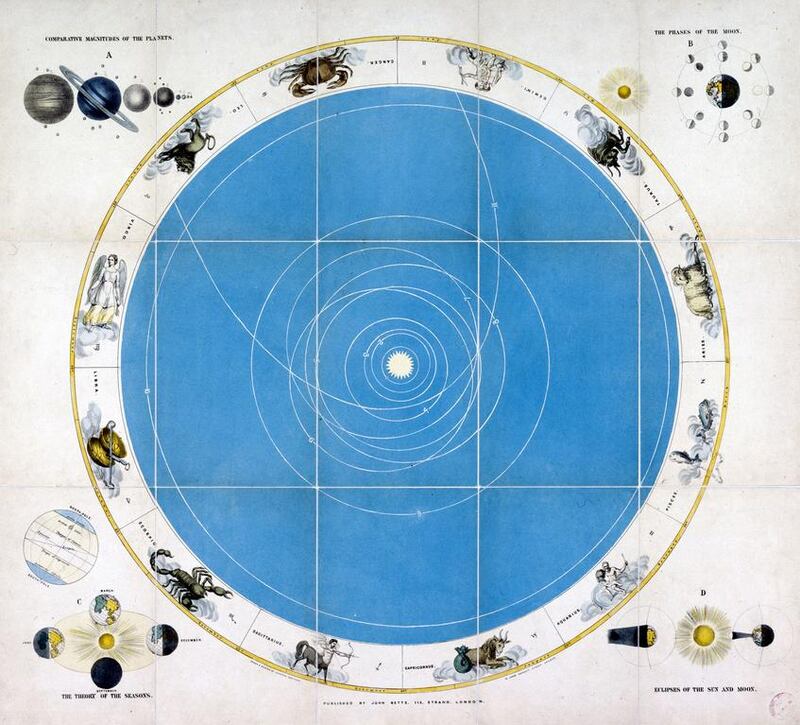You probably haven't heard of a planet called Vulcan. That's because it doesn't exist. But for a good chunk of the 19th century, leading scientists believed that such a planet did, and that it was lurking near Mercury. It only needed to be pinpointed and they had a powerful system of ideas backing their hypothesis – Isaac Newton's theory of gravitation and how it governed the orbits of planets. Or so it seemed. The Hunt for Vulcan is a short, beautifully produced book that tells a fascinating but cautionary tale.
It’s author Thomas Levenson, head of MIT’s graduate programme in science writing, deals in big ideas about the universe – the biggest of all, really, about space, time and the very ways we perceive the cosmos – and colourfully illustrates the limits of scientific theory as it faces new data, and even more persuasive theories that better explain the movements of planets through the solar system.
Levenson is a playful, breezy writer who is able to render complex ideas in down-to-earth language, though he can be rather too colloquial at times. (Saying someone “believed he could simply ramp up his math chops” is too matey.) Elsewhere his text includes sharp character studies of Newton and other leading players in this sometimes oddball drama of science and discovery, as well as nifty illustrations and diagrams, all of which bring zest to the story of a fiendish astronomical quandary.
It all began with Isaac Newton. In the 1680s, the renowned British scientist and mathematician was working out the laws of celestial motion and gave the world one of the most revolutionary theories in intellectual history. Here was a basis “for a general science of motion, a set of laws that could, deployed properly, describe the how, the where, and the when of every bit of matter on the move anywhere – everywhere – in the cosmos”.
Plug in a few variables – mass, the square of the distance between two objects – et voilà, the universe was seemingly explained by a beautiful, stunningly precise mathematical equation. Newton’s law of gravitation was put to powerful use, showing how the planets of our solar system moved in elliptical orbits.
Until Newton, the known solar system consisted of Mercury, Venus, Earth, Mars, Jupiter and Saturn. His theories advanced the growth of our planetary system and pointed the way to the discovery of Uranus then Neptune. Observable data meshed with mathematical reasoning to open up the heavens, allowing them to be mapped and charted. Newton's tenets, Levenson writes, enables "anyone to figure out where Mars would be next Tuesday".
Newton himself proclaimed that his proposition “cannot fail to be true”. In the case of Uranus and Neptune, theory was verified by the data. But Newton’s laws would not yield the answer to the Mercury problem. If planets such as Mars revolved around the sun in a regular ellipsis, Mercury’s orbit displayed a peculiar anomaly, an irregular path. According to Newtonian logic, there must be another body’s gravitational pull acting on it, causing it to behave the way it did. Was it an asteroid – or an unknown planet?
This was the issue that confronted one of the most intriguing characters in Levenson’s story, the 19th-century French mathematical astronomer Urbain Le Verrier, who would spend years trying to get to the bottom of why Mercury did what it did. Le Verrier, a brilliant if prickly man, threw everything he had at the problem, endlessly recalibrating and working the numbers. Le Verrier did not entertain any doubts about Newtonian theory. The issue with Mercury, he surmised, was due to “some inaccuracy in the working [calculation] or some material cause whose existence has escaped us”.
Finding that “material cause” became his mission. The nearby Venus was ruled out as the culprit. He entertained the possibility that an asteroid might be causing the orbital deviations. Le Verrier, who published his findings in 1859, contended that there was a lurking planet that was exerting itself on Mercury. All that remained was to find this celestial body, which he dubbed Vulcan.
Stargazers and astronomers scanned the skies looking for empirical evidence to back up the conjecture. Reports filtered in, but nothing quite clinched the assertion. But as Levenson nicely writes: “The lack of a pure Neptune moment must have been frustrating, but given the inherent difficulty of the problem, such momentary glimpses gained significance each time another letter from some sincere and precise stranger reached Paris.”
The key question, as Levenson puts it, is “what happens when a prediction fails to find its match in nature?” Or: “Once Vulcan refused to appear, decade after decade, what should have been done about that icon of the scientific revolution, Isaac Newton’s theory of gravity?”
Fast forward to the 20th-century, and the start of another scientific revolution. It took the mind of Albert Einstein to get to the bottom of the Vulcan problem.
Levenson’s account of Einstein’s journey to the theory of relativity is well-paced and clearly explained. It took Einstein some eight years to formulate his breakthrough. As a way to test it, he applied it to the Mercury question, and it accounted for the eccentric orbit without the existence of a phantom planet. And when he delivered a talk detailing his calculations in 1915 in Berlin, his “pen destroyed Vulcan – and reimagined the cosmos”.
Einstein had brought the very essence of time to bear on the problem, putting forth a “new, radical conception of gravity”. “No chunk of matter was required to explain Mercury’s track, no undiscovered planet, no asteroid belt, no dust, no bulging solar belly, nothing at all – except this new, radical conception of gravity”. All that remained was observations in the field, conducted in 1919 by a team of British scientists. Their data buttressed Einstein’s revelatory advance. With that, poor, misbegotten Vulcan was consigned to the dustbin, and our view of the universe was changed forever.
Matthew Price is a regular contributor to The Review.





